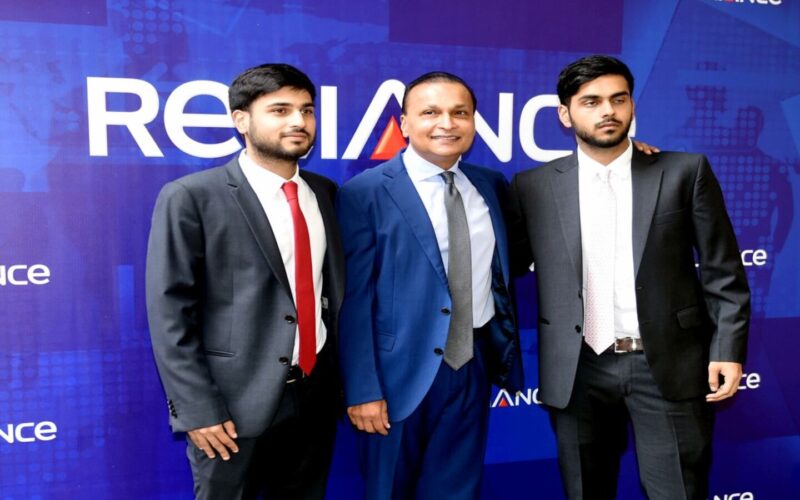Reviving the Lost Glory: How Anil Ambani’s Reliance Group is Making a Comeback with Fresh Young Leadership
Anil Ambani, once among India’s most celebrated business tycoons, faced turbulent times over the past decade as his conglomerate, the Reliance Group, struggled with mounting debts, legal battles, and dwindling market credibility. However, a renewed strategy spearheaded by a wave of young, visionary leadership within the promoter family is turning the tide. This infusion of fresh energy and ideas is gradually restoring the lost glory of the Reliance Group, signaling a significant shift in its fortunes.
This article explores the transformative journey of Anil Ambani’s Reliance Group, focusing on the pivotal role of young leadership, their strategies, and the resurgence across sectors like financial services, energy, and media.

The Rise and Fall of Anil Ambani’s Empire
Anil Ambani, the younger sibling of Mukesh Ambani, inherited a share of the sprawling Reliance empire in 2005 after a family settlement divided the business. Under his leadership, the Reliance Group rapidly expanded into telecommunications (Reliance Communications), power generation (Reliance Power), infrastructure (Reliance Infrastructure), and financial services (Reliance Capital). At its peak, the group’s market capitalization soared, and Anil Ambani was hailed as one of the richest individuals globally.
However, the subsequent years were marked by challenges. Reliance Communications, once a pioneer in India’s telecom sector, failed to keep pace with technological changes and fierce competition from Mukesh Ambani’s Reliance Jio. The collapse of Reliance Power’s mega projects, delays in infrastructure ventures, and a staggering debt load of over $10 billion pushed the conglomerate to the brink of bankruptcy. Legal disputes and a lack of investor confidence further compounded the group’s woes.
The Dawn of a New Era: Enter the Young Blood
The recent resurgence of Anil Ambani’s businesses can be credited to a strategic decision to inject fresh, dynamic leadership into the group. Members of the younger generation, including Anmol Ambani and Anshul Ambani, have stepped into prominent roles within the organization, bringing with them innovative approaches and a renewed sense of purpose. Their involvement signifies a crucial shift from traditional management styles to a modern, forward-looking vision.

Anmol Ambani: The Catalyst for Change
Anmol Ambani, Anil Ambani’s elder son, has been instrumental in driving the transformation of Reliance Capital. Known for his deep understanding of financial markets and a hands-on leadership style, Anmol has prioritized streamlining operations, reducing debt, and leveraging technology to enhance efficiencies.
One of his major initiatives has been the digitization of Reliance Capital’s operations, focusing on fintech-driven solutions. By integrating advanced analytics and artificial intelligence, the company has been able to enhance its risk assessment capabilities and improve customer experiences. Anmol’s push towards sustainable investments has also attracted interest from global investors, breathing new life into the company’s portfolio.

Anshul Ambani: Revitalizing the Energy and Infrastructure Arms
Anshul Ambani, the younger sibling, has taken the reins of Reliance Infrastructure and Reliance Power. His leadership has been characterized by a focus on renewable energy and sustainable practices, aligning with global trends towards green energy.
Under Anshul’s guidance, Reliance Power has pivoted from coal-based power plants to solar and wind energy projects. The company recently announced a series of renewable energy projects, including a 500 MW solar park in Rajasthan and wind energy projects in Tamil Nadu. These initiatives not only address environmental concerns but also attract subsidies and incentives, improving the group’s financial health.
Reliance Infrastructure, another key arm, has adopted an asset-light model, shedding non-core assets and focusing on profitable urban infrastructure projects. Anshul’s pragmatic approach to cost management and project execution has started yielding results, with several metro and road projects nearing completion ahead of schedule.

Strategic Moves Driving the Revival
Debt Restructuring and Financial Discipline
A significant aspect of the Reliance Group’s revival has been its focus on reducing the massive debt burden that once threatened to sink the conglomerate. The group has actively engaged in asset monetization, selling off non-core businesses to pare down liabilities. For instance, the sale of Reliance Communications’ assets to Mukesh Ambani’s Reliance Jio was a crucial step in addressing telecom sector losses.
In addition, a robust financial discipline instilled by the younger leadership has ensured that new investments are made cautiously, prioritizing returns and sustainability. The focus on lean operations and cost-cutting measures has started to reflect positively in the group’s financial statements.
Leveraging Technology and Innovation
The younger generation has embraced technology as a cornerstone of their revival strategy. From implementing artificial intelligence in financial services to adopting smart grid solutions in the power sector, technology has become a key enabler of efficiency and growth.
In the media arm, Reliance Entertainment has focused on digital content creation, capitalizing on the surge in OTT (over-the-top) platforms. Collaborations with global studios and a focus on original, high-quality content have positioned the company as a formidable player in the entertainment industry.
Commitment to Sustainability
The Reliance Group’s shift towards sustainability is not just a response to regulatory pressures but also a strategic move to align with global investor priorities. Renewable energy, electric vehicle infrastructure, and green bonds are some areas where the group is actively investing.
Reliance Power’s transition to green energy and Reliance Infrastructure’s focus on eco-friendly urban projects underscore this commitment. The younger Ambanis have also championed corporate social responsibility (CSR) initiatives, reinforcing the group’s image as a responsible corporate entity.

The Road Ahead: Challenges and Opportunities
While the resurgence of Anil Ambani’s Reliance Group is promising, challenges remain. The group must navigate regulatory hurdles, rebuild investor trust, and contend with intense competition in sectors like renewable energy and digital media. Additionally, ensuring the seamless execution of ongoing projects and maintaining financial discipline will be critical to sustaining this revival.
However, the opportunities are equally significant. India’s push for renewable energy, infrastructure development, and digital transformation aligns well with the group’s renewed focus. The younger leadership’s vision, combined with strategic partnerships and technological innovation, positions the Reliance Group to capitalize on these opportunities.
Conclusion
Anil Ambani’s Reliance Group’s journey from glory to near-collapse and now resurgence is a testament to the power of resilience and reinvention. The infusion of fresh, young leadership has not only brought innovative strategies but also rekindled the group’s entrepreneurial spirit.
As Anmol and Anshul Ambani take the helm, the group is poised for a remarkable comeback, rewriting its legacy in the annals of Indian business. If current trends continue, the Reliance Group may well reclaim its position as a powerhouse, driven by a vision that blends tradition with modernity.









